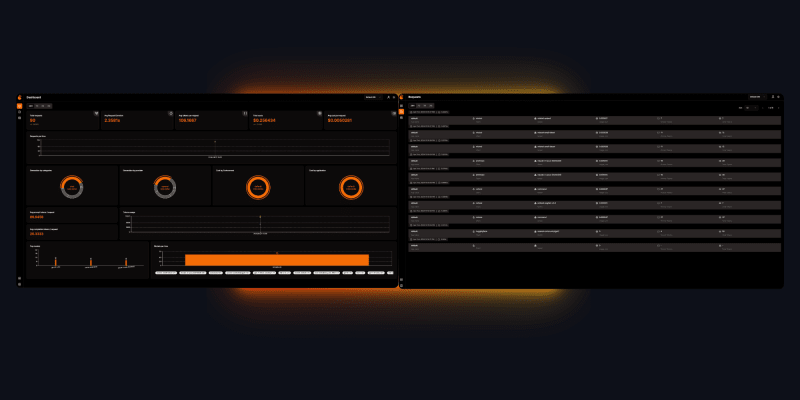Introduction:
In the world of GenAI projects, seamless observability is key to unlocking top-notch performance and reliability. Meet OpenLIT, the OpenTelemetry-native GenAI and LLM Application Observability tool that's set to revolutionise the way you monitor and optimize your applications. With just a single line of code, OpenLIT makes integrating observability into your GenAI projects as easy as pie. Let's dive into the world of OpenLIT and explore how it can enhance your application observability.
Understanding LIT:
LIT, short for Learning and Inference Tool, is a visual and interactive tool designed to provide insights into AI models and visualize data. Originally introduced by Google, LIT offers a user-friendly interface for understanding the inner workings of AI models and analyzing data effectively.
Features that Make OpenLIT Stand Out
Monitor LLM and VectorDB Performance
OpenLIT automatically generates traces and metrics, giving insights into your application’s performance and costs. You can track performance in different environments and optimize resource use efficiently.
Cost Tracking for Custom and Fine-Tuned Models
You can customize and track costs for specific AI models using OpenLIT’s custom JSON file. This helps in precise budgeting and aligning costs with your project needs.
OpenTelemetry-native SDKs
OpenLIT supports OpenTelemetry natively, ensuring smooth integration without added complexity. Being vendor-neutral, it easily fits into your existing AI stack.
OTel Auto Instrumentation Capabilities
OpenLIT complies to the OpenTelemetry community’s Semantic Conventions and is updated on a regular basis to maintain alignment with the community. OpenLIT offers insights to improve the performance and stability of LLM applications, whether using popular hosted LLMs like OpenAI and HuggingFace, self-hosted LLMs like Ollama or GPT4All, or vector databases like ChromaDB and Pinecone.

Openlit supported integrations
Here is the list of supported GenAI and LLM libraries :
LLMs
- OpenAI
- Ollama
- Cohere
- Anthropic
- GPT4All
- Azure OpenAI
- Mistral
- HuggingFace
- Amazon Bedrock
- Vertex AI
- Groq
Vector DBs
Frameworks
Here’s is the list of support for connection to other observability platforms:
- Prometheus
- Otel Collector
- Grafana
- Jaeger
- New Relic
- Datadog
- Signoz
- Dynatrace
- Open Observe
- Highlight.io
Sleek and Intuitive Design
OpenLIT UI offers a dashboard with a clean interface based on Next.js and Clickhouse, providing quick and responsive performance. The interface is deliberately arranged based on feedback from numerous AI Developers, making it simple to navigate and locate the information you require quickly.
Overall Usage
Shows total requests, request duration, token usage, cost analysis, and more using real-time and historical data.

Requests
Provides an integrated view of traces for tracking individual requests. You can also apply dynamic filters to customize your view or sort the results based on costs, tokens etc.

Database config
Allows you to add and switch between multiple ClickHouse databases, making it convenient to manage different contexts with the same interface.

Join us on this exciting voyage to reshape the future of AI observability! 🚀 Share your thoughts, suggest cool features, and dive into awesome contributions. Let’s make AI observability open and better together! 🚀
 openlit
/
openlit
openlit
/
openlit
OpenLIT is an open-source GenAI and LLM observability platform native to OpenTelemetry with traces and metrics in a single application 🔥 🖥 . Open source GenAI and LLM Application Performance Monitoring (APM) & Observability tool
OpenLIT is an OpenTelemetry-native GenAI and LLM Application Observability tool. It's designed to make the integration process of observability into GenAI projects as easy as pie – literally, with just a single line of code. Whether you're working with popular LLM Libraries such as OpenAI and HuggingFace or leveraging vector databases like ChromaDB, OpenLIT ensures your applications are monitored seamlessly, providing critical insights to improve performance and reliability.
This project proudly follows the Semantic Conventions of the OpenTelemetry community, consistently updating to align with the latest standards in observability.
What is LIT?
LIT stands for Learning and Inference Tool, which is a visual and interactive tool designed for understanding AI models and visualizing data. The term LIT was introduced by Google.
⚡ Features
- Advanced Monitoring of LLM and VectorDB Performance: OpenLIT offers automatic instrumentation that generates…












Top comments (0)